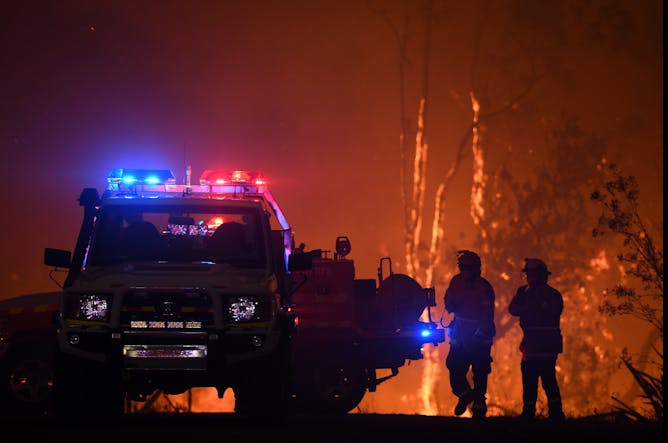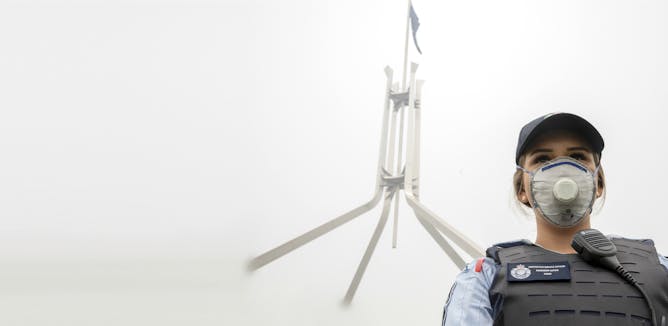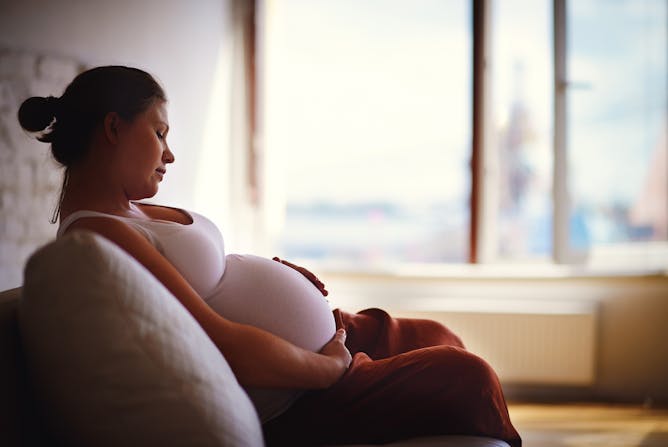|
|
|
Editor's note
|
|
A badly timed holiday to Hawaii. A forced handshake on a victim of the bushfires. A promotional video spruiking the government’s response to the bushfires.
Many Australians have reacted with fury to Prime Minister Scott Morrison’s response to the bushfires, criticising him for being out of touch and lacking in empathy.
What should a leader do in times of crisis? What qualities do people respond to?
Rosemary Williamson, who has studied how prime ministers have responded to disasters throughout Australian history, writes that people’s expectations of their leaders changed with the advent of television, and now the explosion of social media.
For example, in response to the Black Sunday bushfires in Victoria in 1926, The Age printed a speech by Prime Minister Stanley Bruce in which he promised federal government aid and praised the heroism and altruism of Australians.
A leader wouldn’t get away with that these days. Our politicians are expected to be visible after a crisis, offering real comfort to victims and listening to their needs.
And above all else, Williamson says, we look for authenticity in these moments, not obviously scripted photo opportunities.
|
Justin Bergman
Deputy Editor: Politics + Society
|

|
|
Top story
|

Boris Jancic(AAP)/9News
Rosemary Williamson, University of New England
Disaster of any kind throws qualities of leadership – or the perceived lack thereof – under the spotlight. People respond most to leaders who show empathy and authenticity.
|

It’s the first time since overlapping records began that Australia experienced both its lowest rainfall and highest temperatures in the same year.
dan HIMBRECHTS/AAP
David Jones, Australian Bureau of Meteorology; Karl Braganza, Australian Bureau of Meteorology; Skie Tobin, Australian Bureau of Meteorology
The Bureau of Meterology says persistent drought and record temperatures were a major driver of Australia's fire activity, and the context for 2019 lies in the past three years of drought.
|

On many days Canberra has the worst air quality of any major international city. Even in the best buildings it’s not good.
NARENDRA SHRESTHA/EPA
Geoff Hanmer, UNSW
Plugging ventilation holes in walls helps, but there are dangers.
|

Pregnant women should try to stay inside when the air pollution is high.
From shutterstock.com
Sarah Robertson, University of Adelaide; Louise Hull, University of Adelaide
Pregnant women exposed to bushfire smoke face a higher risk of complications including gestational diabetes, high blood pressure and giving birth prematurely.
|
Arts + Culture
|
-
Stephen Gaunson, RMIT University
True History of the Kelly Gang marks the tenth screen version of the Ned Kelly outbreak, and is a more violent and dark – and therefore true – telling.
-
Vanessa Kowalski, University of Melbourne
Items can be recovered after a fire – here is how to look after them.
|
|
Environment + Energy
|
-
John Woinarski, Charles Darwin University; Brendan Wintle, University of Melbourne; Chris Dickman, University of Sydney; David Bowman, University of Tasmania; David Keith, UNSW; Sarah Legge, Australian National University
In a matter of weeks, the fires have subverted decades of dedicated conservation efforts for many threatened species.
|
|
| |
Featured jobs
|
|
|
| |
| |
| |

|
| |
| |
| |
Featured events
|

|
RMIT University City Campus, Melbourne, Australian Capital Territory, 3000, Australia — RMIT University
|

|
The Great Hall, The Quadrangle, University of Sydney Camperdown, NSW 2006, Sydney, Australian Capital Territory, 2006, Australia — University of Sydney
|
|
|
|
| |
| |
| |
| |
| |
|
|
|
|
|
|
|